On View
See Works From Picasso’s Tender Early Years as They Take Center Stage at the Fondation Beyeler
The artist's Blue and Rose periods are the focus of the exhibition in Basel, Switzerland.
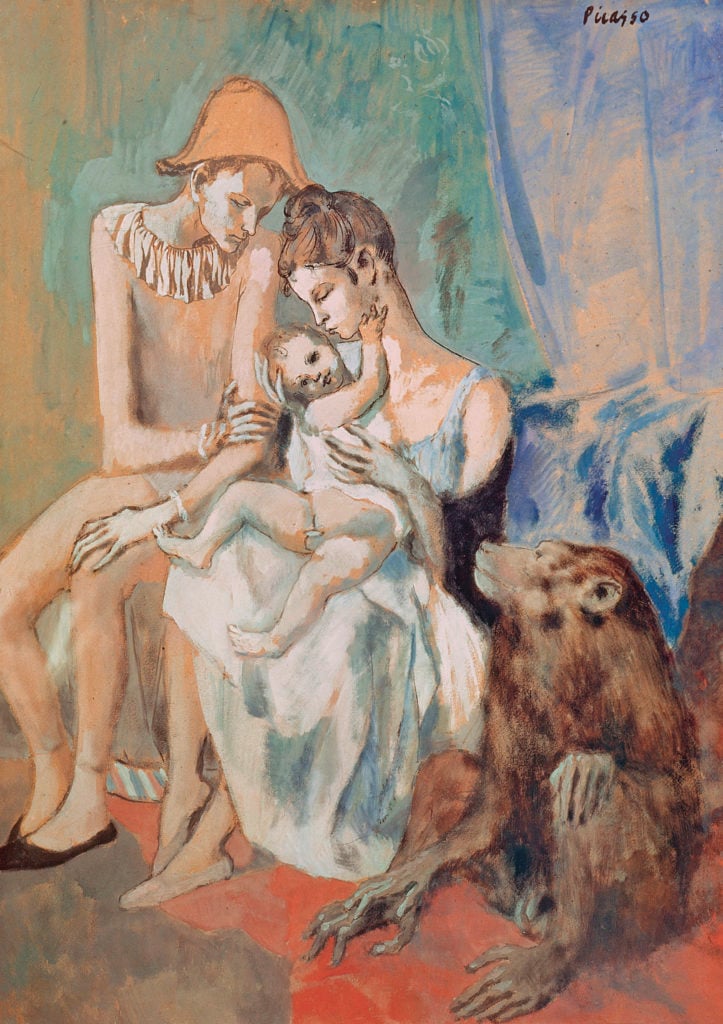
The artist's Blue and Rose periods are the focus of the exhibition in Basel, Switzerland.

Kate Brown

At this point in history, the oeuvre and legacy of Pablo Picasso has been presented from almost every possible angle. But a new show at the Swiss museum Fondation Beyeler manages to show a side of the artist we don’t often see: his tender early years.
On view at the Basel institution until May 26, “The Young Picasso: Blue and Rose Periods” looks at the Spanish painter and sculptor during the tender time of his early twenties. All the works on view are dated between 1901 to 1906, during Picasso’s respective Blue and Rose periods. The two palettes dominate the show in Switzerland, as do human figures, when Picasso’s early painting life was focused on portraiture of people on the fringes: harlequins, circus families, and his own lovers in France and Spain.
The exhibitions come at a time when Picasso shows are proliferating worldwide (there were 21 exhibitions in France in 2017 alone). The artist’s son, photographer and filmmaker Claude Picasso, sounded off about this in the press last year, decrying the number of loans going out from the Musée National Picasso-Paris. But even though that institution is one of the lenders to the Fondation Beyeler show, Cluade was complimentary of this one at a press conference in Basel earlier this month.
“In this particular show, we can see Picasso in progress,” said Claude, who is also the son of the art critic and painter Françoise Gilot. “We start with Picasso arriving in Paris, being absolutely stunned and bewildered by this wonderful, incredible life and liveliness in Paris. And then he starts to live in Paris and it’s much more difficult; it becomes much more real. He pays attention to the people around him and they have a difficult life. Even though he frequents the circus, it’s not all amusement.”
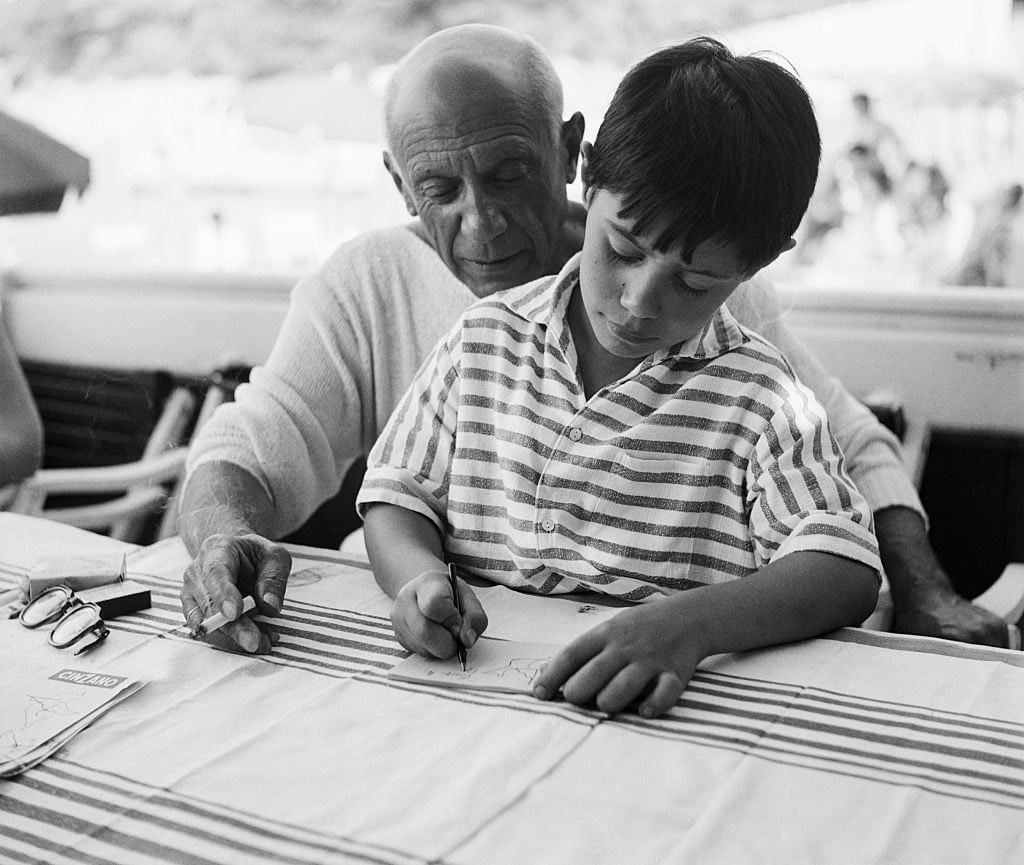
Pablo Picasso and his son Claude in 1955. Photo: Bettman.
Some 75 works traveled to Switzerland following the exhibition’s first and larger iteration at the Musée d’Orsay in Paris, which featured closer to 300 works. Many well-known pieces from the Blue and Rose periods are on view, including the gloomy painting La Vie, which captures birth, love, and suffering all in one canvas, and dates to the artist’s Blue period. Several of Picasso’s portraits of harlequins, jugglers, and other circus performers feature prominently in the show, which transcend both the melancholic Blue period and the more celebratory and hopeful Rose period.
Also on view is the painting Femme en Chemise, which, according to Picasso’s biographer John Richardson, depicts the artist’s former girlfriend, Madeleine. In 1904, around the time the work was painted, Madeleine found out she was pregnant and, with Picasso’s approval, had an abortion. Little else is known about her, but motherhood and family life was a strong presence in Picasso’s work that followed, including Harlequin’s Family with an Ape from 1905, which is also on view in the show. Richardson surmised that the figures in this painting, and another one from the time, Mother and Child, Acrobats, were also inspired by Madeleine.
Several sculptures also appear in the show. “Whenever Picasso did sculpture, it’s because he’s painted himself into a corner and he couldn’t get out of it, so he had to figure out how to go onto the next step,” Claude Picasso said at the press conference. “And every time this happened, he went and made sculptures, and this allowed him to go to the next step.”
See more images from the exhibition below.
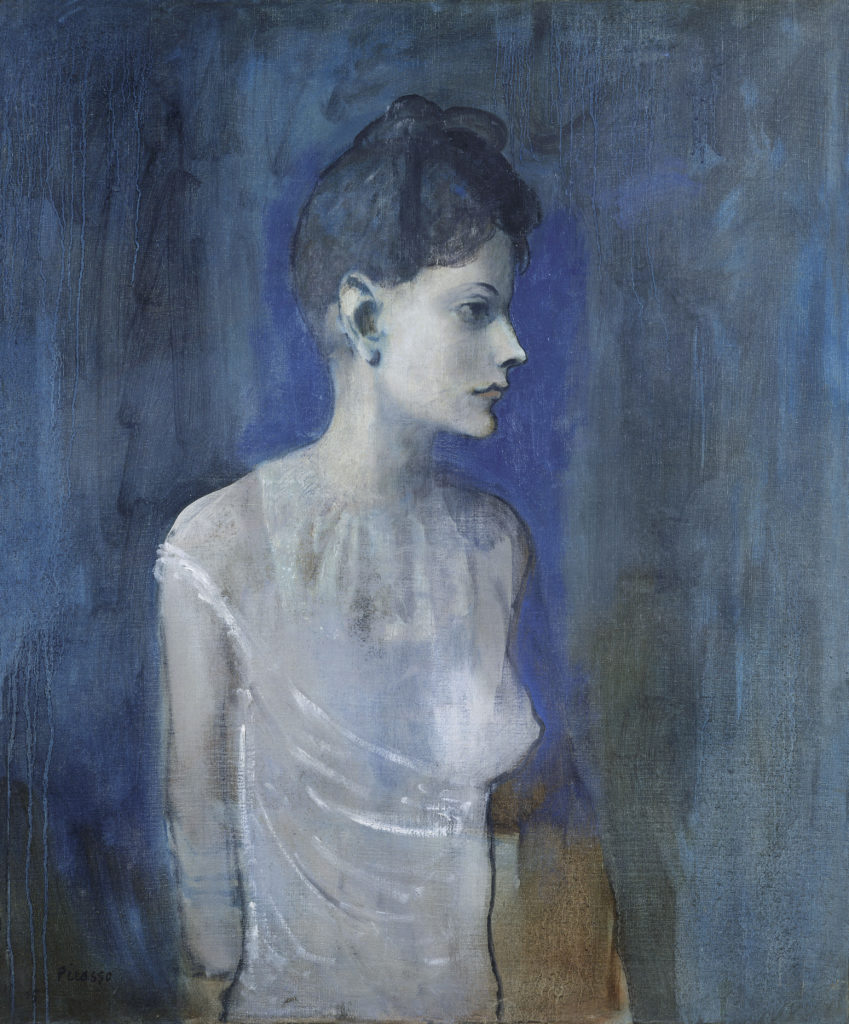
Pablo Picasso, Femme en Chemise (Madeleine) (1904-05). London, Tate, Vermächtnis C. Frank Stoop, 1933 © Succession Picasso / 2018, ProLitteris, Zürich Foto: © Tate, London 2018.
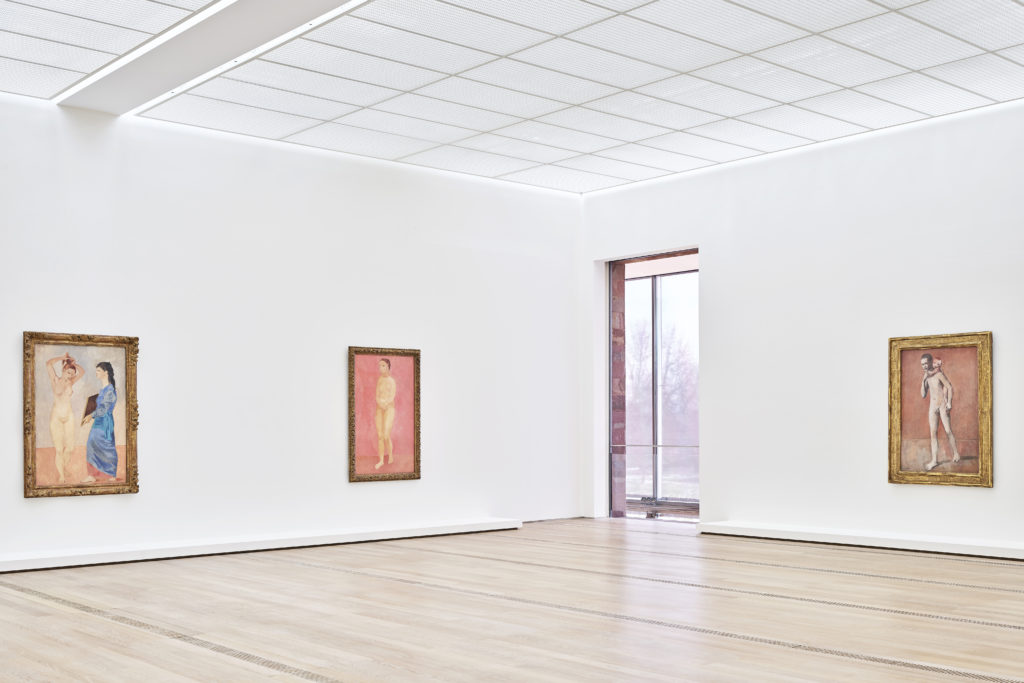
Installation view of “The Young Picasso: Blue and Rose Periods” at the Fondation Beyeler, Riehen/Basel, 2019; © Succession Picasso / 2019, ProLitteris, Zürich. Photo: Mark Niedermann.
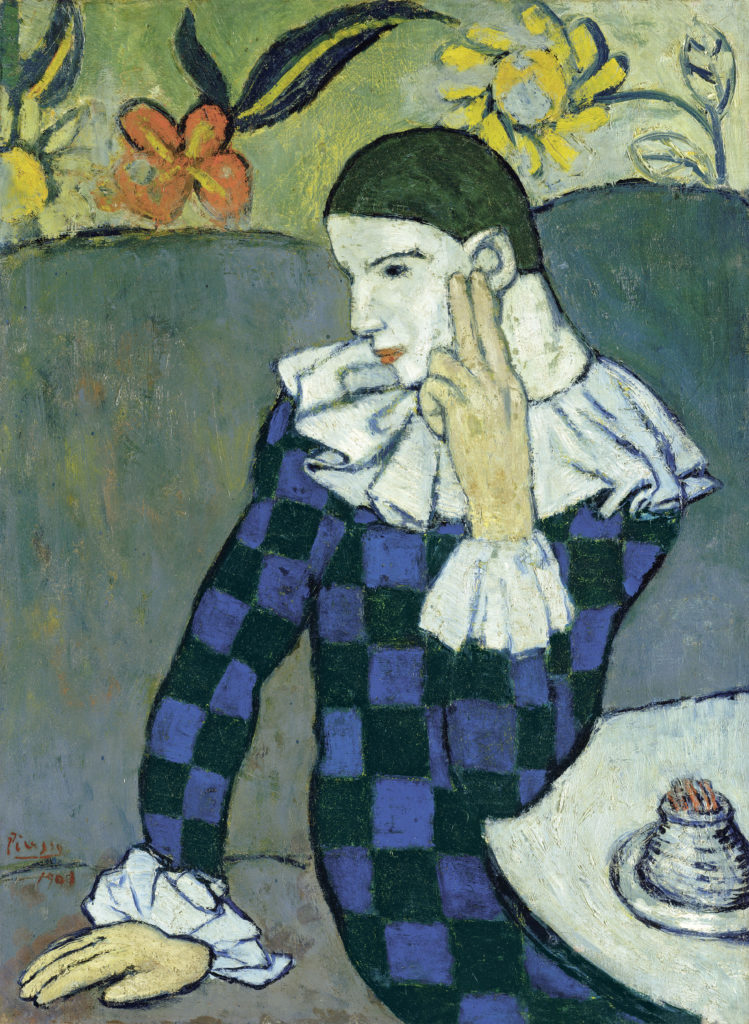
Pablo Picasso, Arlequin assis (1901). New York, Metropolitan Museum of Art. Purchase Mr. and Mrs. John L. Loeb, Gift 1960. © Succession Picasso / 2018, ProLitteris, Zurich. Photo: ©The Metropolitan Museum of Art/Art Resource/Scala, Florence.
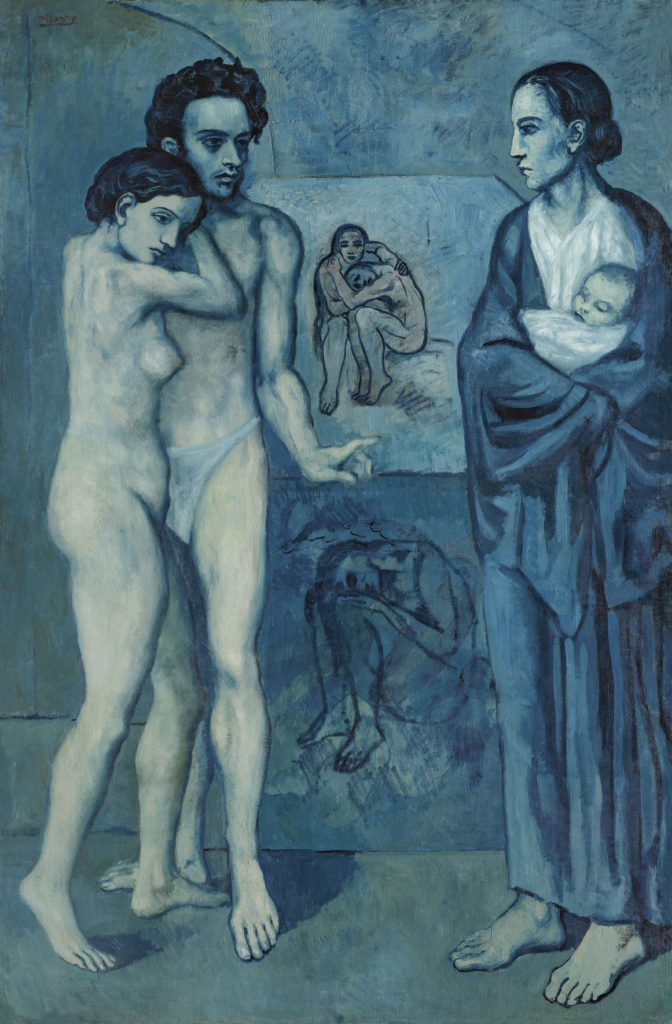
Pablo Picasso, La Vie (1903). The Cleveland Museum of Art, Donation Hanna Fund
© Succession Picasso / ProLitteris, Zurich 2018. Photo: © The Cleveland Museum of Art.
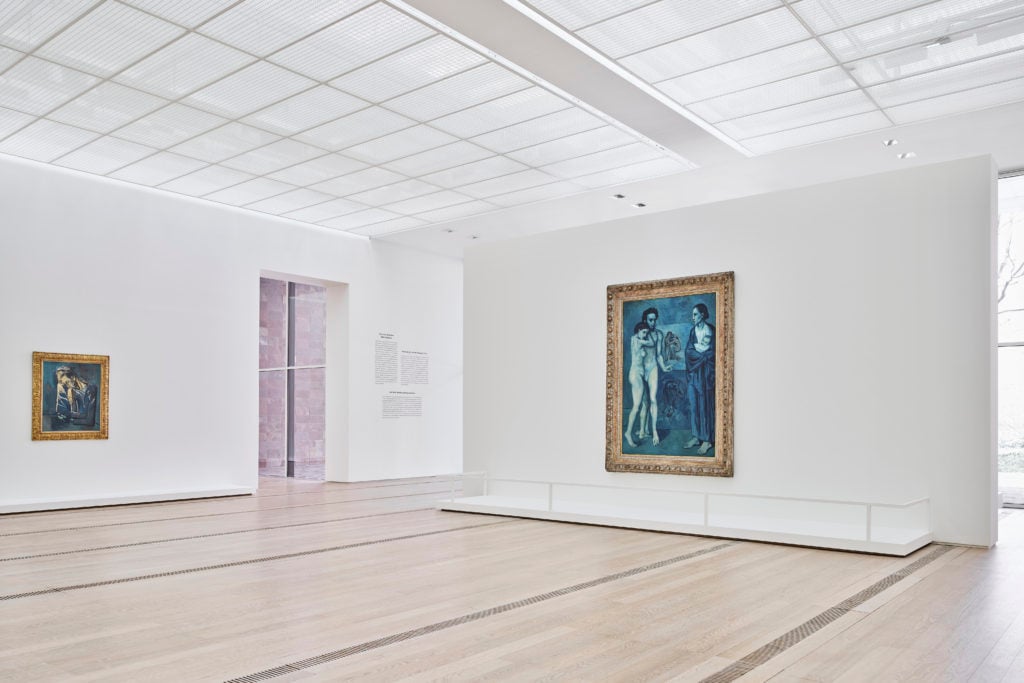
Installation view of “The Young PICASSO: Blue and Rose Periods” at the Fondation Beyeler, Riehen/Basel, 2019; © Succession Picasso / 2019, ProLitteris, Zürich. Photo: Mark Niedermann.
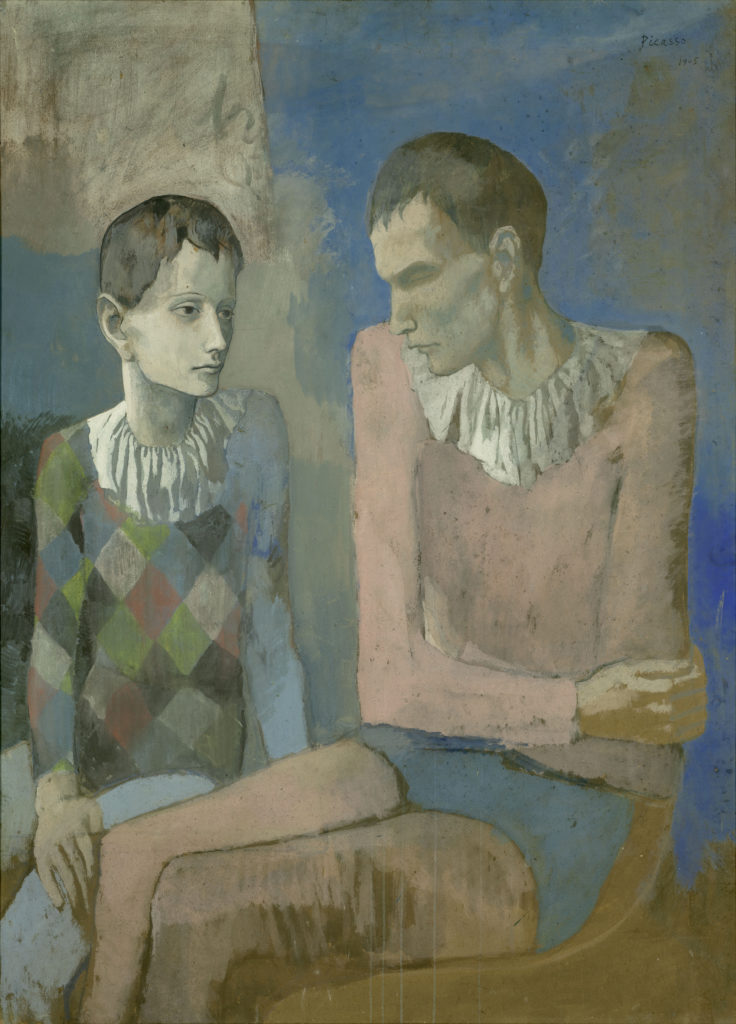
Pablo Picasso, Acrobate et jeune arlequin (1905). Private collection © Succession Picasso / 2018, ProLitteris, Zurich.
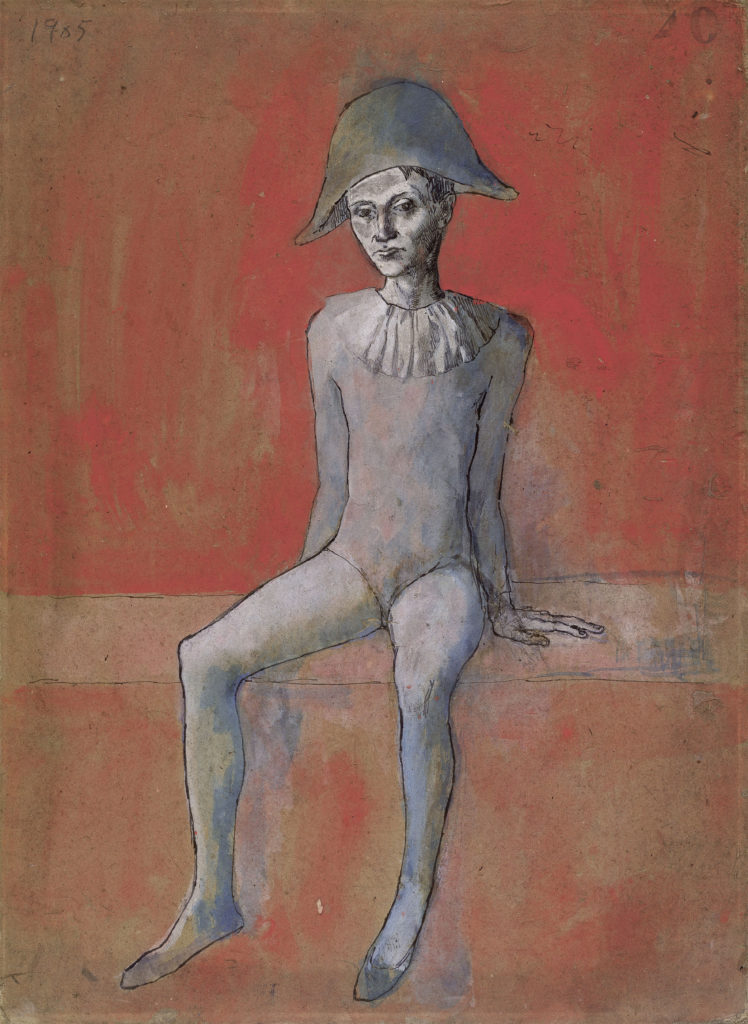
Pablo Picasso, Arlequin Assis Sur Fond Rouge (1905). Staatliche Museen zu Berlin, Nationalgalerie, Museum Berggruen © Succession Picasso / 2018 ProLitteris, Zürich 2018. Photo: bpk / Nationalgalerie, SMB, Museum Berggruen / Jens Ziehe.
“Picasso: Blue and Rose Periods” is on view at the Fondation Beyeler in Basel, Switzerland, until May 5, 2019.